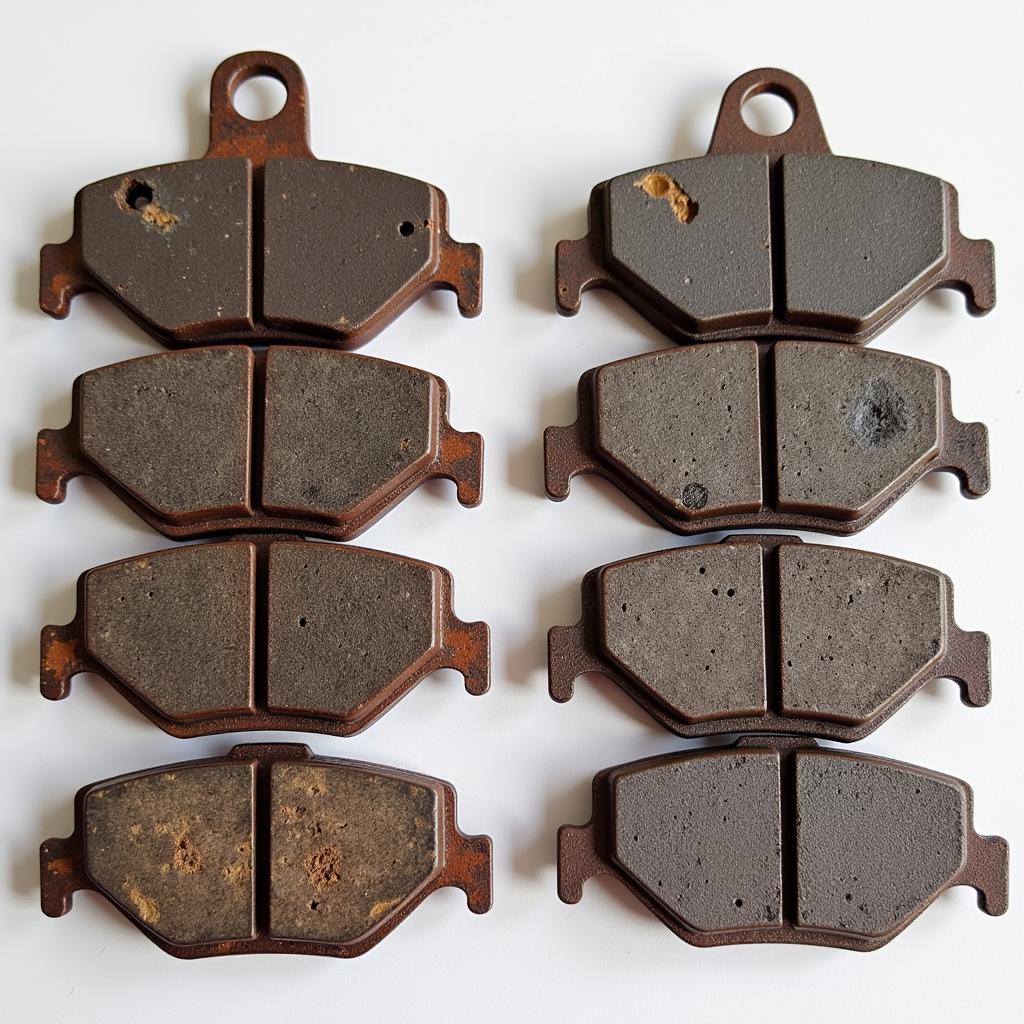The brake warning light, a menacing beacon on your dashboard, illuminates for various reasons, often signaling an issue within your braking system. While it can be as simple as forgetting to release the parking brake, it often points towards more critical concerns requiring immediate attention to ensure your safety and the well-being of your vehicle.
Deciphering the Dashboard Siren: Common Causes of a Brake Warning Light
The brake warning light isn’t merely an annoyance; it’s a crucial communication tool between your car and you. Ignoring it can lead to hazardous situations. Let’s delve into the common culprits behind this dashboard alarm:
1. Low Brake Fluid Level: The Lifeblood of Your Brakes
Brake fluid, the lifeblood of your braking system, transmits the force from your foot on the pedal to the brake calipers, causing the vehicle to stop. A leak in the system or worn brake pads can lead to low fluid levels, triggering the warning light.
Expert Insight: “Low brake fluid is a serious issue often indicating a leak. Driving with a leak compromises braking ability, leading to potential accidents. It’s crucial to address this immediately,” says Mark Stevenson, Senior Automotive Engineer at BrakeTech Solutions.
2. Worn Brake Pads: The Unsung Heroes of Stopping Power
 Worn brake pads next to new brake pads
Worn brake pads next to new brake pads
Brake pads, the unsung heroes of your braking system, experience wear and tear with every stop. As they wear down, the brake caliper pistons extend further to compensate, eventually triggering the brake warning light.
3. Faulty Brake Pad Sensor: The Watchdog’s Cry
Many modern cars utilize brake pad sensors – small wires embedded within the brake pad material. As the pads wear down, the sensor makes contact with the rotor, completing a circuit and illuminating the warning light.
4. ABS Issues: When Anti-lock Goes Awry
The Anti-lock Braking System (ABS) prevents wheel lock-up during hard braking, ensuring control. A malfunction within the ABS system, often indicated by a separate ABS warning light, can also trigger the brake warning light.
Expert Insight: “While the brake warning light indicates a general braking issue, a simultaneously illuminated ABS light suggests a problem within the anti-lock braking system, requiring specialized diagnostics,” advises Emily Carter, Lead Diagnostic Technician at Auto Clinic Pro.
5. Other Potential Culprits
- Faulty brake light switch: A malfunctioning switch may prevent the brake lights from engaging and trigger the warning light. For more information on how to diagnose a faulty brake light switch, see our guide: brake warning light switch
- Issues with the master cylinder: This crucial component distributes brake fluid; any malfunction can disrupt braking performance.
- Air in the brake lines: Air compromises hydraulic pressure, leading to a spongy brake pedal feel and reduced braking efficiency.
Troubleshooting the Brake Warning Light: What to Do
-
Safety First: If the brake warning light illuminates while driving, pull over safely when possible. Continuing to drive with a compromised braking system poses a severe safety risk.
-
Check Your Parking Brake: Ensure the parking brake is fully disengaged. Sometimes, even a slight engagement can trigger the warning light.
-
Inspect Brake Fluid Level: With the engine off and cool, locate the brake fluid reservoir (refer to your owner’s manual). The reservoir typically has a “min” and “max” marking. If the fluid level is below the “min” mark, add the appropriate brake fluid type recommended by your vehicle manufacturer.
-
Visual Inspection: Look for any visible signs of brake fluid leaks near the wheels, around the master cylinder, or along the brake lines.
-
Seek Professional Help: If the brake warning light persists after checking the brake fluid level or if you notice any leaks, it’s crucial to consult a qualified mechanic immediately. Driving with a compromised braking system is incredibly dangerous.
Frequently Asked Questions
1. Can I drive my car with the brake warning light on?
It’s highly discouraged. The brake warning light indicates a potential issue within your braking system. Driving with a compromised braking system is extremely dangerous and can lead to accidents.
2. How much does it cost to fix a brake warning light issue?
The cost can vary significantly depending on the underlying cause. Simple fixes like adding brake fluid or replacing a faulty sensor might be relatively inexpensive. However, major repairs like replacing the master cylinder or calipers can be more costly.
3. How often should I check my brake fluid?
It’s recommended to check your brake fluid level at least once a month as part of your routine vehicle maintenance. Refer to your owner’s manual for specific recommendations.
4. Do new brake pads require a brake light reset?
Some vehicles require a reset after brake pad replacement, while others don’t. For instance, some Mercedes models require a specialized tool to reset the brake pad warning light after replacing the pads. Refer to your owner’s manual or consult a mechanic for guidance. For specific instructions on resetting the brake pad warning light on a Mercedes, you can check out this guide: brake pads are new but got the warning mercedes
5. Can a low battery cause the brake warning light to come on?
While unlikely, a severely low battery can potentially affect various electrical systems in your car, including triggering warning lights. It’s always good practice to ensure your battery is in good condition.
Conclusion
The brake warning light, a crucial safety indicator, should never be ignored. Promptly addressing the underlying issue ensures the optimal performance of your vehicle’s braking system, safeguarding you and others on the road. Remember, when it comes to brakes, erring on the side of caution is always the wisest course of action.
